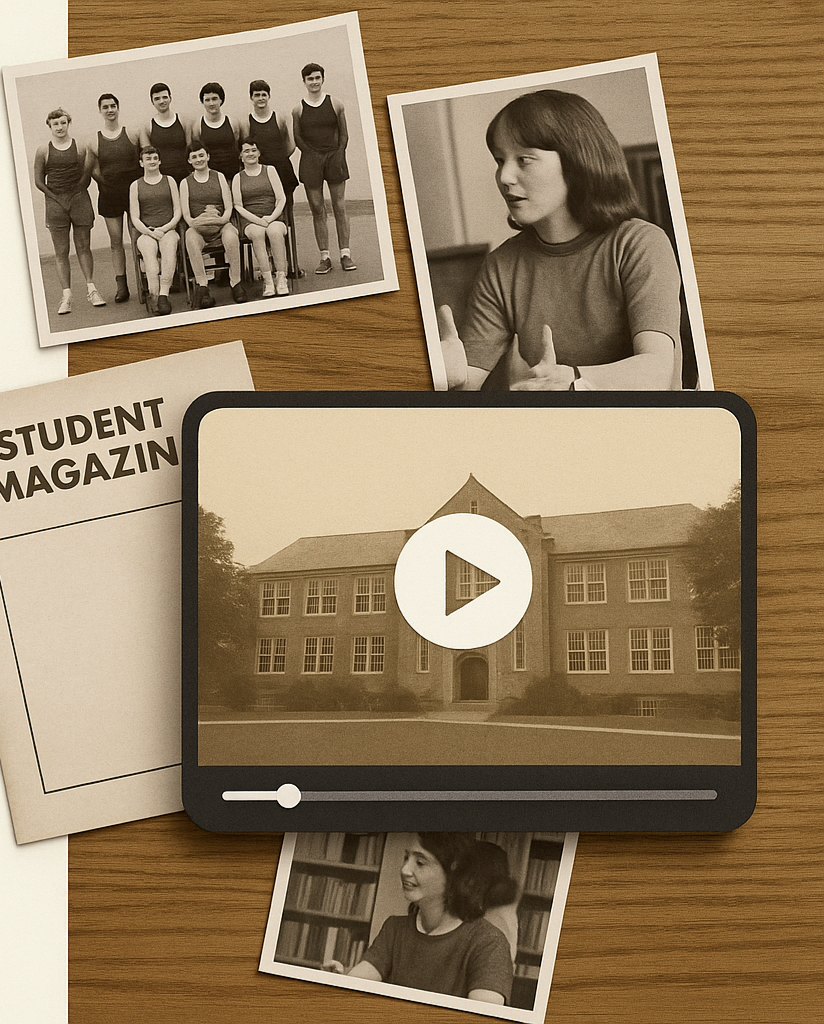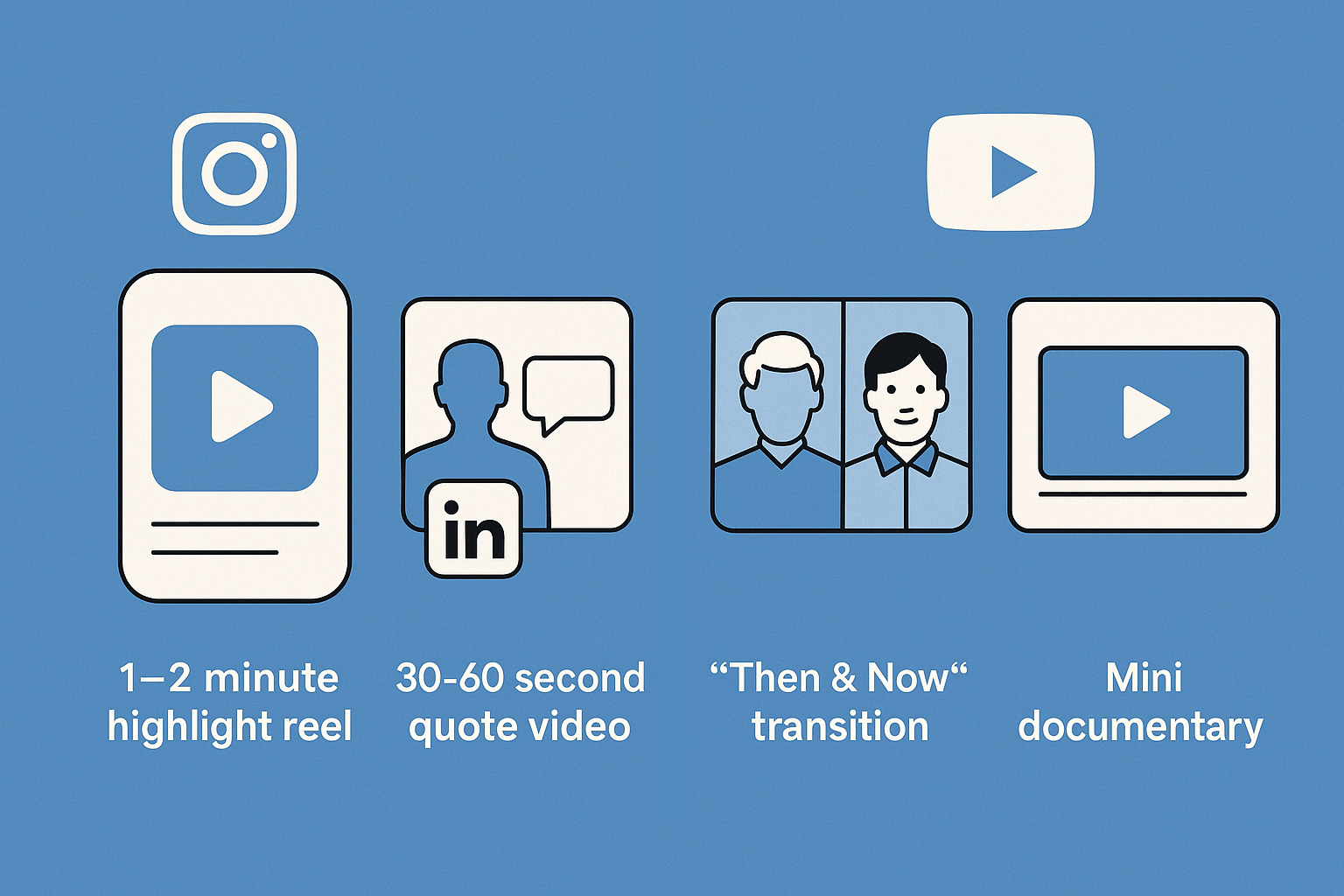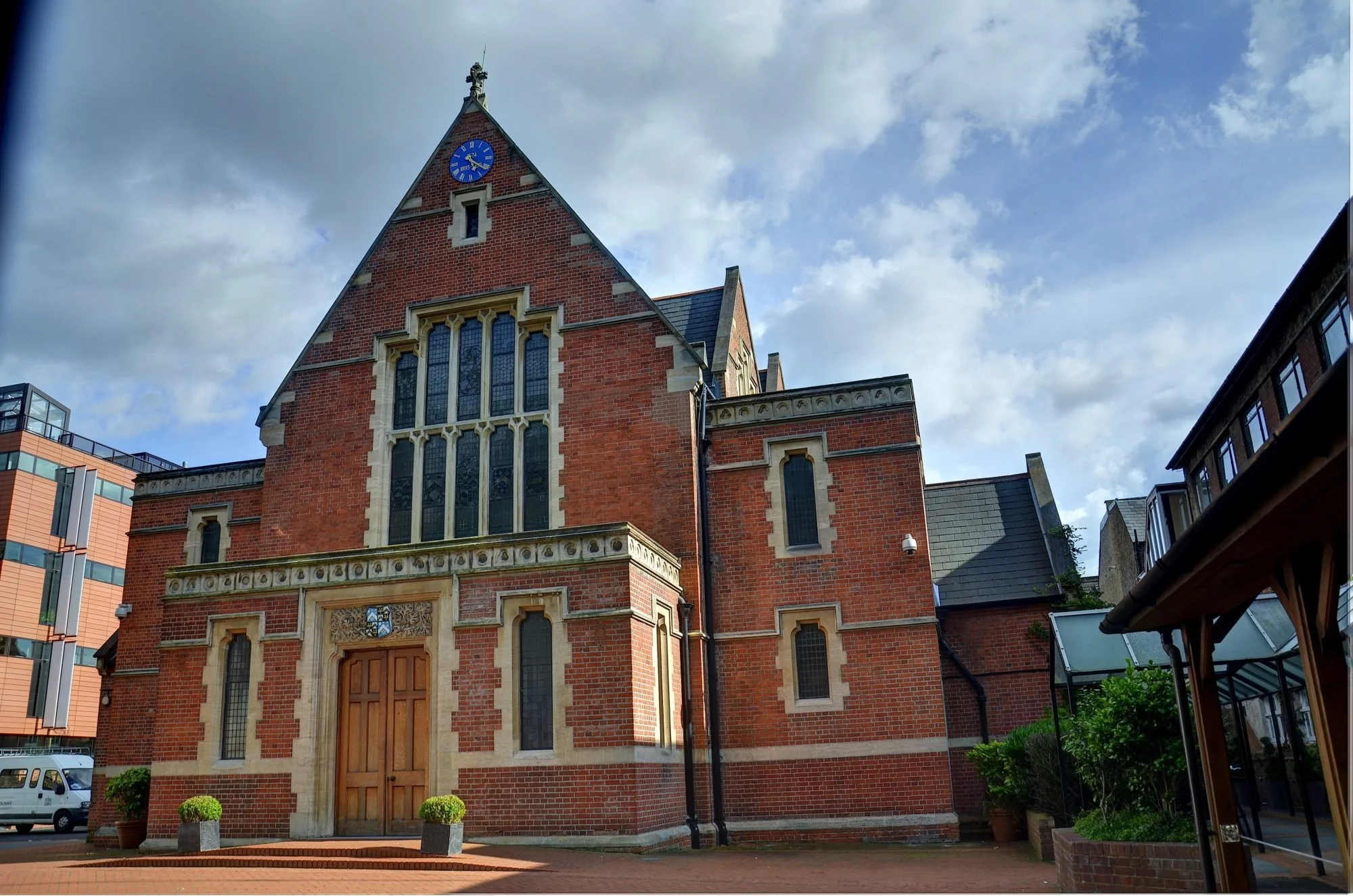How to Turn Archival Content Into Powerful Video Stories
Summary: Archives although valuable for storage, are essential for storytelling. Old photos, magazines, newsletters, and recordings can be transformed into short, powerful video stories that capture attention and spark emotion in a video-first world. With the right narrative, sound, and format, schools and universities can repurpose decades of content into engaging digital assets that inspire alumni, attract donors and connect with future students. With platforms like SocialArchive, schools can automate video creation, making it fast, affordable and impactful.
You already have the material. Old photographs, student magazines, recorded interviews, newsletters and decades of forgotten footage stored in dusty cupboards, scattered digital folders or within your digital archives. But how do you bring it to life in a way that captures attention in today’s fast-scrolling, video-first world?
The answer: turn it into a story. More specifically, a video story; short, engaging, emotion-driven content that brings your school’s history, mission and community to life for alumni, donors and future students.
Whether you’re planning for a school anniversary, creating content for your website or looking for new ways to engage alumni on social media, your archive is a goldmine. With the right tools and a clear narrative, it can become one of your school’s most powerful digital assets.
Why Video Works
Let’s start with why video is so effective, especially in the context of alumni engagement and fundraising:
📈 Video is the #1 content format on social media -and it generates 12x more shares than text and images combined
❤️ Emotion drives action - video is unmatched at telling human stories
🎯 Attention spans are short - video can communicate more in 60 seconds than a page of text ever could
🧠 Memory retention is stronger with audio-visual content, helping your message stick
And when your content is rooted in real history, the impact is even greater. You're not just telling a story, you're reviving a memory, rekindling pride and inspiring connection.
1. Start With the Story, Not the Content
Before you begin digging through your archives, start with this question:
“What story do we want to tell?”
That story might be:
The evolution of the school over the past 100 years
The impact of a particular teacher, sport, or tradition
The experiences of alumni during a particular decade
A “Then & Now” comparison that highlights transformation
Once you define the story, you can curate archival content that supports it, rather than trying to force a story from a collection of random materials.
Pro tip: Keep your narrative focused. One story per video, one emotion per story.
2. Curate with Purpose
When sifting through archival content, look for material that meets one (or more) of the following criteria:
Emotionally resonant – Smiling students, handwritten notes, dramatic performances
Visually interesting – Vibrant photos, old uniforms, historic architecture
Timely or themed – Content tied to anniversaries, sporting events, or national history
Rare or surprising – Footage or stories no one has seen in years
Your goal is to create a visual narrative, not just a slideshow. Select assets that show change, personality, and atmosphere, not just posed group photos.
3. Layer in Voice and Sound
One of the best ways to make archival video content feel alive is by adding a voice—literally.
Use voiceovers to introduce context or narrate a story
Layer in alumni audio clips sharing memories related to the visuals
Add music that reflects the tone: nostalgic, celebratory, inspirational
Sound turns still images into stories. Even a single black-and-white photo becomes powerful when accompanied by the voice of someone who lived the moment it captured.
Pro Tip: With tools like SocialArchive, you can collect alumni audio stories that can be easily synced with visual content.
4. Keep It Short and Purposeful
When creating archival video stories, less is more. Think of your video content as chapters, not novels. Each one should have a clear point, a single emotion and a natural end.
Here are a few winning formats:
1–2 minute highlight reels for social media
30–60 second quote videos featuring an image + an alumni voiceover
“Then & Now” transitions with side-by-side comparisons
Mini documentary (3–5 minutes) for anniversaries or major campaigns
Silent screen content with subtitles for social sharing
Each piece doesn’t have to be a masterpiece, but it should be memorable and easily shareable.
5. Match the Format to the Channel
Where you share your video matters just as much as what’s in it.
Instagram & Facebook – Short, square or vertical videos, designed for mobile. Great for quick throwbacks and alumni quotes.
LinkedIn – Slightly longer stories with a professional tone. Think alumni reflections, “Then & Now” pieces, or school impact narratives.
YouTube – Ideal for longer-format mini-documentaries or full-length interviews.
Email Campaigns – Embed a short video in newsletters to boost open and click rates.
On-site Screens or Events – Use compilations or montages at reunions, fundraisers, or open days.
Pro Tip: One piece of archival content can become 4–5 video assets tailored for different platforms.
6. Automate What You Can (And Save Your Time)
Creating video doesn’t have to be expensive or time-consuming. With the right platform, much of the process, from compiling clips to adding music and transitions, can be automated.
SocialArchive’s video tools, for example, allow schools to:
Filter archive content by theme, decade, or event
Select audio clips and images to combine
Automatically generate video stories from selected archival content
Publish directly to social media or email platforms
This means you can create professional video stories in minutes, not days, freeing your team to focus on strategy, and not editing.
7. Inspire Action Through Story
A great archival video doesn’t just entertain, it moves people to act.
Add a call to action at the end of your video: “Share your story,” “Join us at our 125th celebration,” “Donate to the legacy fund.”
Tie emotion to mission: If your story is about a scholarship recipient from the 1960s, connect it to today’s bursary appeal.
Include links and hashtags to build community and drive traffic
Remember: archival content builds trust. And when trust meets emotion, action follows (whether that’s a donation, a social share or an event attendance).
Real-World Examples That Work
Here are a few archival video formats that have worked especially well for schools:
“Voices Through the Decades” – A short video with one line from an alum from each generation, paired with yearbook photos
“Then & Now: The Chapel” – A split-screen journey through a cherished space
“Archive Unboxed” – Staff or students reacting to mystery photos from the archive
“Memory Minute” – A quote from an alum brought to life with photos and voiceover
“A Legacy of Learning” – A 2–3 minute tribute used as the centrepiece of a fundraising campaign
Tell the Story Only You Can Tell
Archival content is more than just history, it’s your story, your people, your impact. When brought to life through video, it becomes a bridge between generations and a tool for connection, celebration and inspiration.
You don’t need a film crew or a massive budget. You just need a story worth telling, and a way to bring it to life.
SocialArchive helps schools turn their archives into dynamic video stories; automatically, affordably and at scale. Whether you’re marking a milestone, launching a campaign or looking to energise your alumni engagement, we’re here to help.
Want to start creating video stories from your archive? Get in touch with our team or book a demo today.
Key Takeaways:
Video is today’s most effective content format, driving shares, emotion and memory.
Start with the story you want to tell, then curate archival content to fit.
Sound, through voiceovers, alumni clips, or music. brings still images to life.
Keep videos short, focused, and adapted to the platform where they’ll be shared.
Repurpose one archival item into multiple video assets across social media, events and campaigns.
Automation tools, like SocialArchive’s video creation tool, make professional-quality video creation quick and accessible.
FAQs:
Why use video for archival content?
Video is the most engaging content format online. It combines visuals, sound, and emotion, making archival stories more impactful and memorable.
What types of stories work best?
Focused narratives such as “Then & Now” comparisons, alumni reflections, milestone celebrations, or tributes to traditions resonate most with audiences.
Do archival videos require professional editing?
Not anymore. Platforms like SocialArchive allow schools to filter content, add audio, and automatically generate polished video stories in minutes.
How can video stories support fundraising or engagement?
By tying emotion to mission, such as linking an archival scholarship story to a current appeal, videos build trust, inspire giving and strengthen communities.
How can SocialArchive help?
SocialArchive streamlines the process of turning archival materials into dynamic videos, automating editing and publishing so schools can engage their communities at scale.















